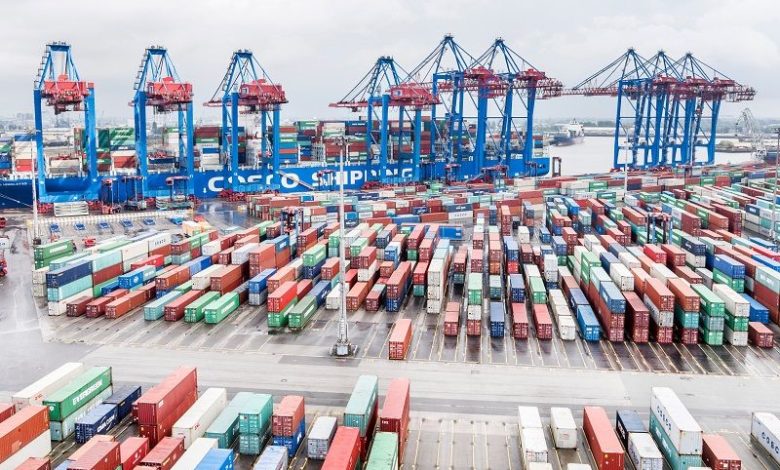Spot box prices spike

Spot box rates are steeply in the ascendant, showing upticks this month akin to the start of Red Sea shipping crisis, or even the onset of the covid pandemic.
Drewry’s weekly composite global index published yesterday increased 16% to $3,159 per feu and has increased by 81% when compared with the same week last year.
The average composite index for the year-to-date is $3,227 per feu, which is $512 higher than the 10-year average rate of $2,714, which itself was inflated by the exceptional 2020-22 covid period.
Freight rates from Shanghai to Rotterdam stood out the most, increasing 20% or $606 to $3,709 per feu. Similarly, rates from Shanghai to Los Angeles surged 18% or $617 to $3,988 per feu.
Drewry said yesterday it expects freight rates ex-China to continue increasing in the upcoming week amid what it described as a “huge demand spike and tight capacity”.
“Container freight rates continue to make sizeable gains with peak season volumes coming following a period of strong regular-way volumes and a constrained fleet due to Red Sea re-routing,” analysts at Jefferies, an investment bank, noted this week. Jefferies pointed out that global volumes have picked up noticeably since the typical February/March lull, forecasting that peak season activity will likely keep rates supported in the coming two to three months.
Many analysts have pointed to growing port congestion at many key ports around the world helping to explain the rates rally in tandem with the ongoing Red Sea shipping crisis.
Due to the rerouting of ships via the Cape of Good Hope following attacks in the Red Sea by Houthis, about 10% more capacity is needed to manage global container trades, according to estimates from shipowning body BIMCO.
“The bullish container freight and charter markets continue to gain ground with carriers pushing for further rate hikes through May while demand for ships remain unabated,” analysts at consultancy Linerlytica noted in their most recent weekly report, adding that overcapacity concerns are currently “on the backburner”
“If price increases are maintained, they would reflect already tight capacity coinciding with a somewhat unexpected and unseasonal climb in demand,” stated Judah Levine, head of research at Freightos, a box booking platform.
In North Europe, Levine described tight capacity and rolled containers likely down to the start of restocking by European importers.
For transpacific trade, Levine said signs of an increase in imports include reports of some rail congestion for arriving imports at the ports of Los Angeles and Long Beach, while shippers are looking nervously on at a possible rail strike in Canada later this month, and there is also the spectre of labour issues at some American ports coming up.
“With April and May typically slow months for ocean freight, an increase in volumes now may reflect some shippers pulling peak season shipments forward out of concern that Red Sea diversions or potential labour disruptions at east coast and Gulf ports might cause delays during the normal busy season,” Levine suggested.
The solid upturn in spot fortunes is also being reflected in the charter market with broker Braemar noting: “The robust market activity persists, with nearly all vessel sizes continuing their upward trajectory.”
Tonnage supply is dwindling rapidly, and the market lacks prompt vessels, leading operators to seek more forward positions.


Astrology Today.
Your daily horoscope ‘steeply in the ascendant’.